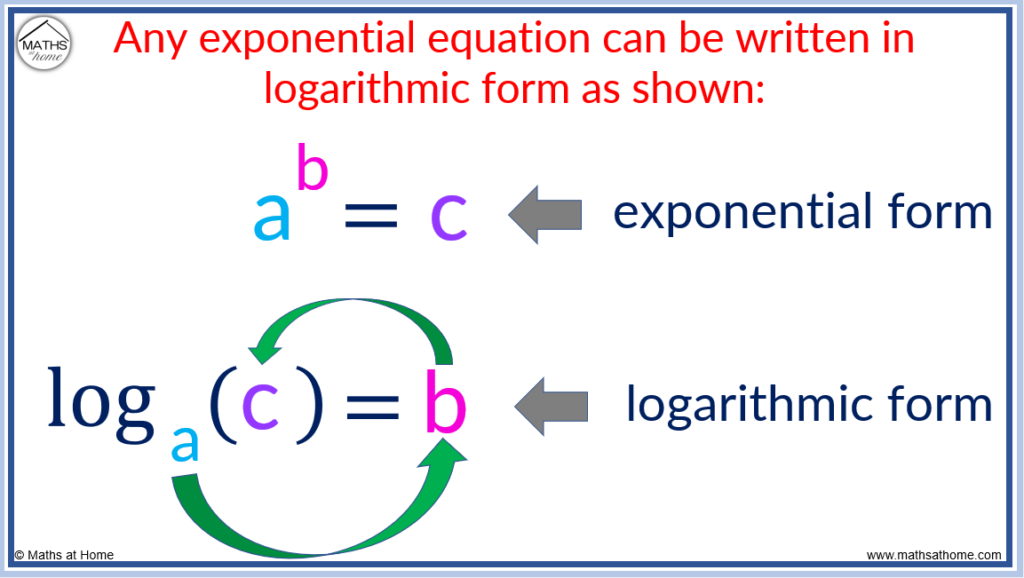
The logarithmic form is written as loga(c)=b. It is a rearrangement of the exponential form, a b =c. Any exponential equation can be written as a logarithm. The logarithmic form is used to calculate an exponent of an equation.
is read as “log base a of c equals b“.

The logarithmic form is simply a rearrangement of an equation written in exponential form. The same numbers are used but they are written in a different order. The word log is written to show that the logarithm function is being used.
An exponential equation contains an exponent (the small number written to the top right of another number).
Equations written in logarithmic form contain three numbers:
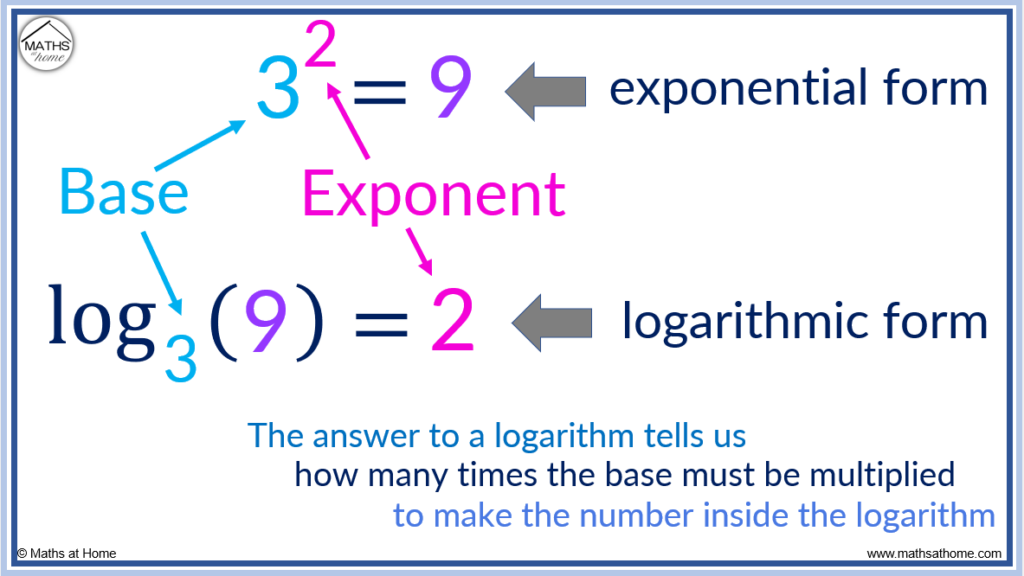
For example, in the exponential equation 3 2 = 9, the 2 is the exponent.
This can be written in logarithmic form as .
The answer to an equation written in logarithmic form is the exponent.
The 2 is the exponent in the exponential form but it is the answer when written in logarithmic form.
The purpose of the logarithmic form is to calculate exponents and solve exponential equations. Logarithms can be used to comprehend the size of large numbers, rearrange equations and solve growth and decay problems.
Here are some examples of where logarithms are used in real life:
Any exponential equation of the form a b =c can be written in logarithmic form using loga(c)=b. For example, the exponential equation 2 3 =8 is written as log2(8)=3 in logarithmic form.
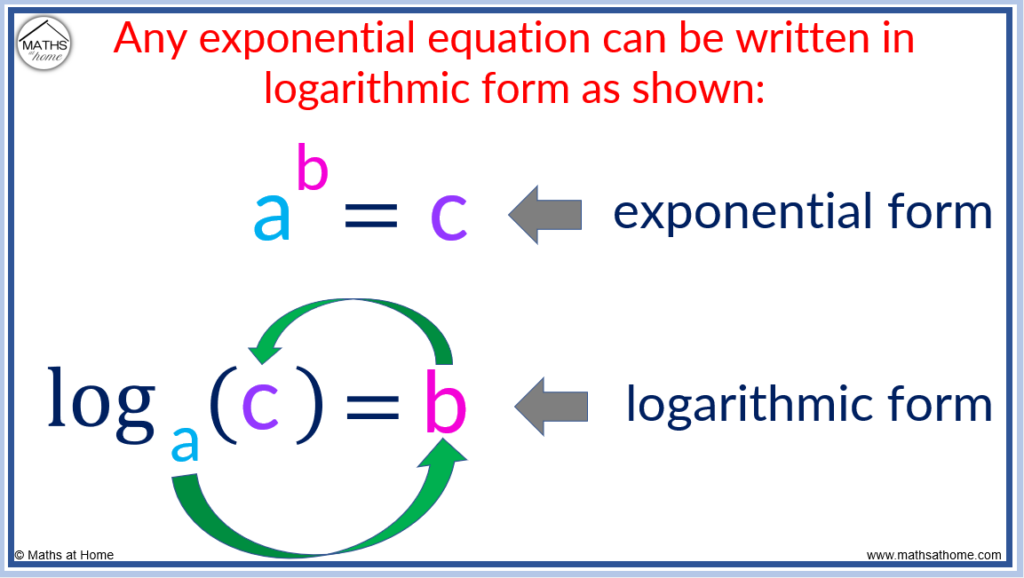
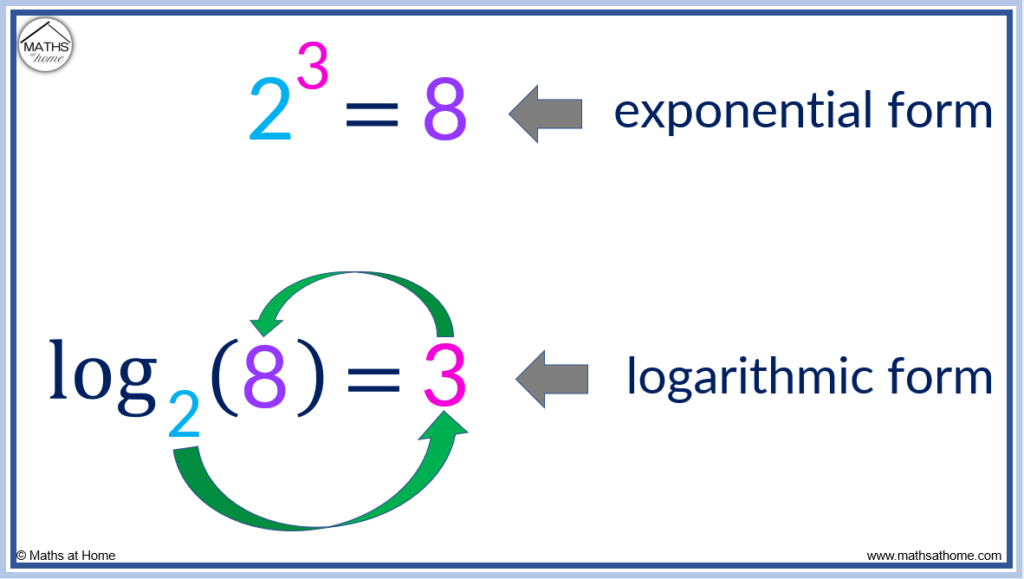
In the example of , , and . Therefore using the formula loga(c)=b, this can be written in exponential form as .
Here is the exponential equation 3 4 =81. It can be written in logarithmic form as .
The number after the equals sign in logarithmic form is the power that the base of the log is raised to to make the number inside the log. Here 3 is raised to the power 4 to make 81.


If the base of a logarithm is 10, it is not necessary to write the number 10. Whenever a logarithm does not have a base written, it is taken to have base 10.
For example, can be written in logarithmic form as .
Instead of writing the base 10 can be removed and it can be written as


Any equation written in logarithmic form can be written in exponential form by converting loga(c)=b to a b =c. For example log5(25)=2 can be written as 5 2 =25.


If an equation written in logarithmic form does not have a base written, the base is taken to be equal to 10.
We typically do not write the base of 10.
For example, means .
The resulting answer to the logarithm is the power that 10 is raised to in order to make 100.

Euler’s number, e≈2.718. The natural logarithm is a logarithm with base e and is written as ln rather than log. For example ln(x) means loge(x).
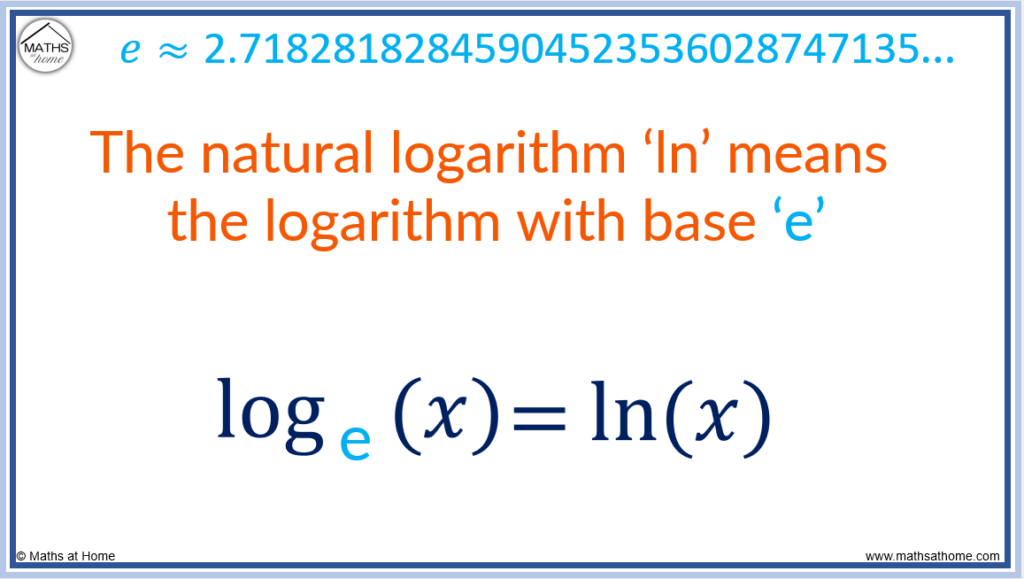
Here are some examples of working with the natural logarithm.
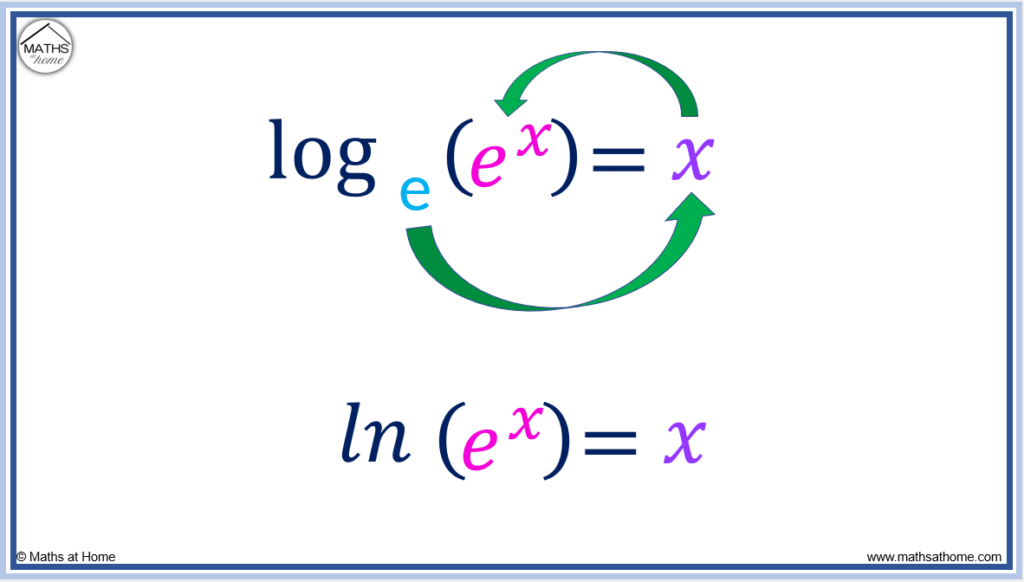
Since e 1 =e, then .
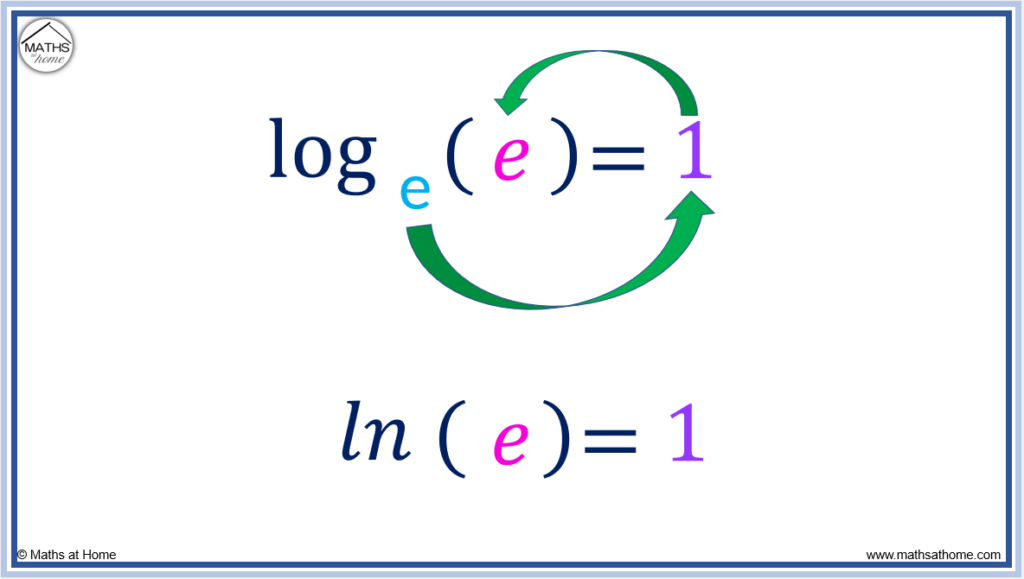
The following rules apply when writing numbers in logarithmic form:
Here are some examples of converting exponential equations to the logarithmic form.
| Exponential Form | Logarithmic Form |
| a b =c | loga(c)=b |
| 3 2 =9 | log3(9)=2 |
| 2 5 =32 | log2(32)=5 |
| 10 3 =1000 | log10(1000)=3 or log(1000)=3 |
| 5 1 =5 | log5(5)=1 |
| 3 0 =1 | log3(1)=0 |
| 9 1 /2 =3 | log9(3)= 1 /2 |
| 5 -2 = 1 /25 | log5( 1 /25)=-2 |
Finding the square root of a number is the same as raising it to the power of one half. Therefore √9=3 can be written as 9 1 /2 =3. Writing this in logarithmic form, log9(3)= 1 /2.
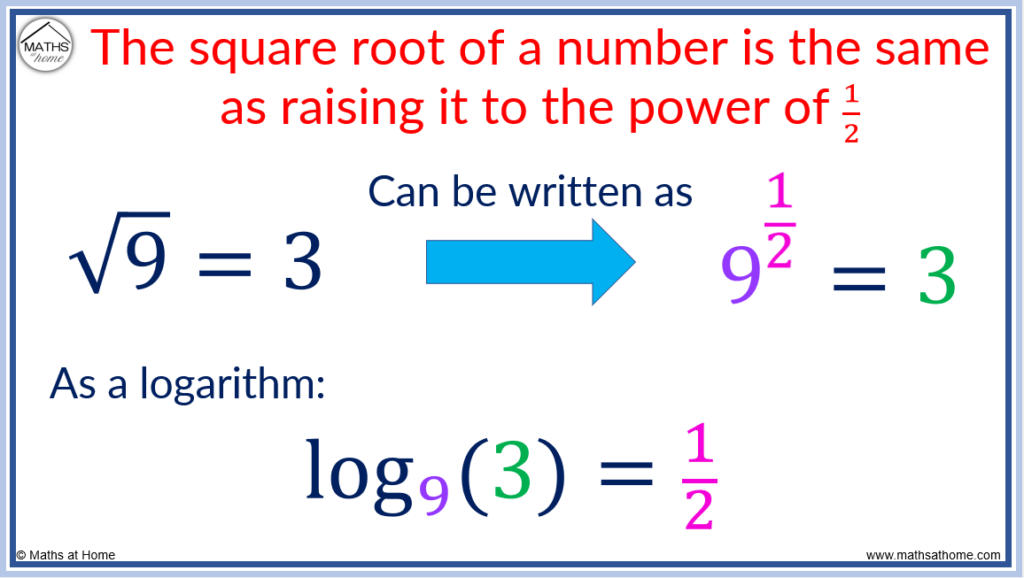 a square root" width="760" height="429" />
a square root" width="760" height="429" />
The rule for converting exponential equations, a b =c, into logarithmic equations, loga(c)=b, also works for fractions. For example ( 1 /2) 3 = 1 /8 can be written as log( 1 /2)( 1 /8)=3.

Any complex number, z=a+bi can be written in form z=re iθ , where r = √(a 2 +b 2 ) and θ=tan -1 (b/a)+2πk. The exponential form of a complex number, z=re iθ can be written in logarithmic form as ln(z)=ln(re iθ ). This can be written as ln(z)=ln(r)+ln(e iθ ), which can be simplified to ln(z)=ln(r)+iθ.